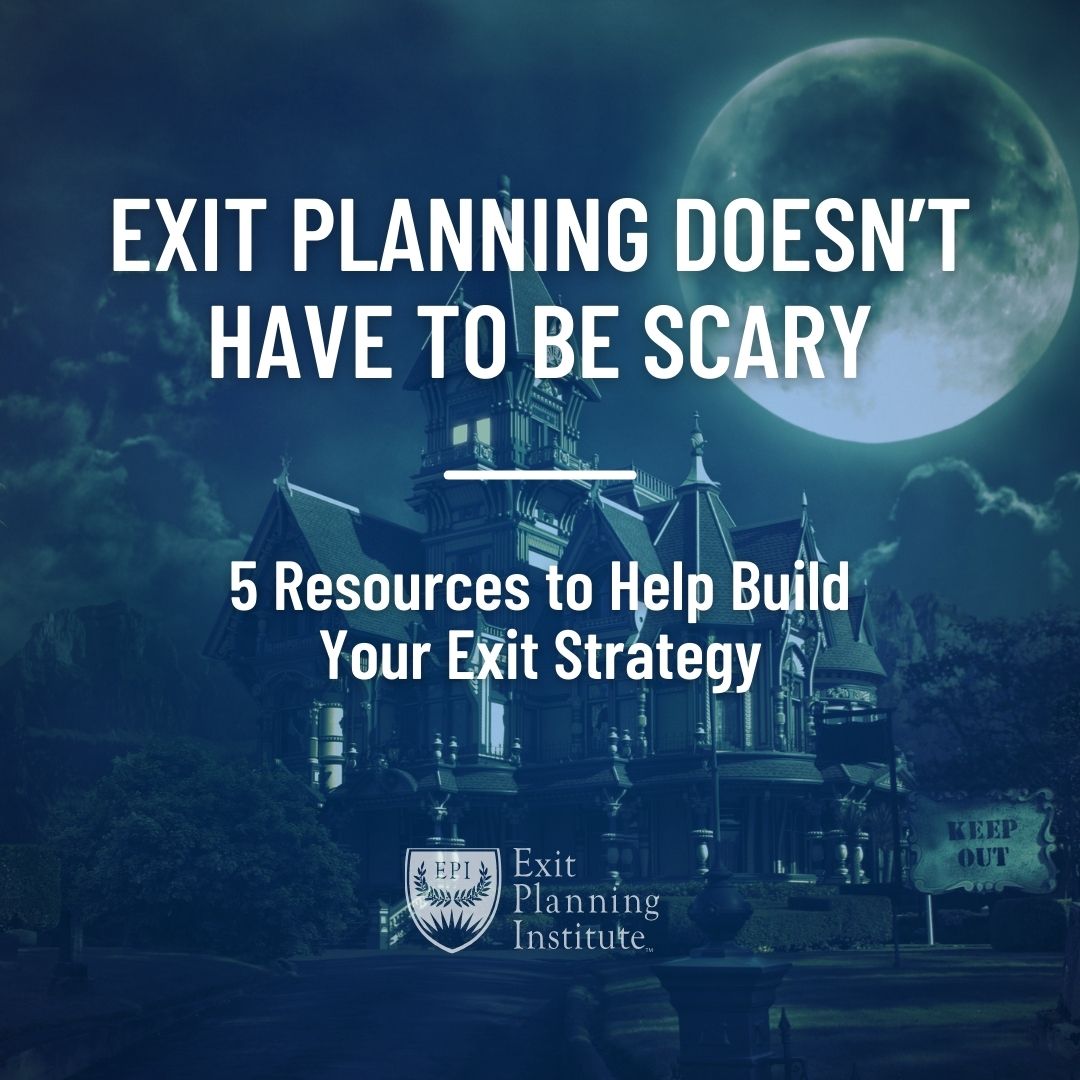
THE EXIT PLANNING BLOG
Keep up-to-date with exit planning, succession planning, industry trends, unique specialty insights, and useful content for professional advisors and business owners.
Share this
Building a Solid Business Plan with a Strong Emphasis on the Owner's Exit Strategy
by Colleen Kowalski on December 1, 2023

December is National Write a Business Plan Month. A business plan is a crucial initial step for business owners to take when launching their new business. Generally, a business plan maps out three to five years of the business and how the owner will raise capital, build their brand, and evaluate the growth of their business.
At Exit Planning Institute, we believe the most successful businesses incorporate exit strategy into their business plans.
The Components of an Effective Business Plan
Traditionally a business plan includes a comprehensive map for the organization’s first few years. The plan outlines strategies and tactics to achieve your goals. It helps identify the steps needed to reach success, including marketing, operations, finances, and sales. It also serves as a benchmark to measure actual performance against planned goals. This tracking helps in identifying areas that need improvement or adjustment.
By evaluating potential risks and challenges, a business plan allows you to anticipate problems and plan contingencies, which is vital for navigating uncertainties. An effective business plan is a dynamic document that must evolve as the business grows to accommodate changing company goals, varying market conditions, and financing.
The following sections are often included in a business plan.
Executive Summary
An executive summary includes your mission statement, an overview of the company’s leadership team, insights into high-level financial strategy, and what product or service you offer.
Company Description
This section should provide a detailed review of the problems the business will solve. Highlight competitive advantages, intangible capital, and successes the company is projected to experience in the market.
Market Analysis
A comprehensive market analysis should include competitive research of the business compared to competitors in the industry.
Organization and Management
This section will highlight the organizational and legal structure of the business. Will this company be an S corporation or a C corporation? Is the business a Limited Liability Company (LLC)? In this section, all leaders in the business should be listed with their experiences called out in detail.
Service Lines
Though briefly mentioned in the executive summary, in this section all product or service lines should be described in detail. Include any plans for intellectual property such as copyrights or patent filings.
Marketing and Sales
Though prone to change as the business grows and evolves, an introductory marketing and sales plan should be shared to project the initial growth of the company in terms of leads and prospective clientele in the first few years.
Funding Request
This section is critical for owners looking to source funding or investment in their organization. The funding request section will outline whether the owner would like debt or equity, the terms of the financial involvement, and the length of time of the engagement.
Financial Projections
The funding request can be supplemented with a detailed analysis of projected financials for the first three to five years of the business. These should include forecasted income statements, balance sheets, cash flow statements, and capital expenditure budgets. In addition to annual projections, the financials should be broken into quarterly or monthly projections.
Exit Planning is Business Planning
Exit planning combines the plan, concept, effort, and process into a clear, simple strategy to build a business that is transferable through strong human, structural, customer, and social capital. The future of the business owner, their family, and the business itself are addressed by exit planning through creating value today.
Simply put, a great business plan must include an exit plan. Integrating an exit plan into your business plan demonstrates foresight and strategic thinking by beginning with the end in mind.
Business owners are doing things inside their company daily that eventually will affect their exit. They must focus on measuring and building value across the four intangible capitals: human, structural, social, and customer. Not only will it build a better company for the owner, their employees, and customers today but it will build a company that is valuable in the future.
Request our Business Planning Pyramid infographic today to build your Business Plan!
Share this
- Blog (546)
- CEPA (425)
- exit planning (249)
- CEPA community (187)
- Business Owner (172)
- Exit Planning Summit (97)
- EPI Chapter Network (89)
- Value Acceleration Methodology (80)
- Exit Planning Partner Network (76)
- EPI Announcement (49)
- Content (48)
- Webinars (37)
- Excellence in Exit Planning Awards (33)
- Marketing (30)
- 2024 Exit Planning Summit (28)
- 5 Stages of Value Maturity (26)
- Books (24)
- EPI Academy (24)
- EPI Team (22)
- Exit Planning Teams (22)
- Leadership (21)
- 2023 Exit Planning Summit (20)
- family business (20)
- women in business (19)
- Intangible Capital (18)
- Exit Options (17)
- Black Friday (16)
- CPA (15)
- Walking to Destiny (15)
- State of Owner Readiness (14)
- Chapters (13)
- Chris Snider (12)
- National Accounts (12)
- Small business (12)
- charitable intent (12)
- personal planning (12)
- Financial Advisors (11)
- Season of Deals (9)
- 5 Ds (8)
- About us (8)
- Podcast (8)
- Insiders Bash (7)
- Scott Snider (7)
- Christmas (6)
- Exit Planning Content Library (6)
- Case Studies (5)
- Owner Roundtables (5)
- Three Legs of the Stool (5)
- Value Advisors (5)
- financial planning (5)
- Awards (4)
- Circle of Excellence (4)
- Exit & Succession (4)
- Five Ds (4)
- executive training (4)
- EPI Thought Leadership Council (3)
- Owners Forum (3)
- author (3)
- forbes (3)
- DriveValue (2)
- Exit Is Now Podcast (2)
- Peter Christman (2)
- Veteran (2)
- Whitepapers (2)
- Business Owners Forum (1)
- SOOR (1)
- business consultants (1)






